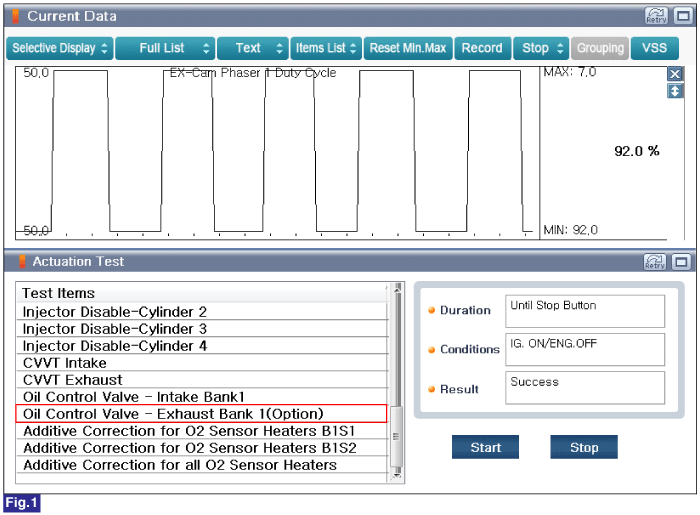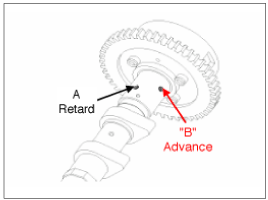Check operation of OCV.
Connect GDS to Data Link Connector(DLC).
IG KEY "ON" & ENG "OFF".
Perform "Actuation Test" for OCV-EX.

Fig.1) Refer to Figure below (Also, operating sound(Clicking sound) is heard)
Has a problem been found?
 | ▶ Go to "Check engine oil" procedure |
 | ▶ Fault is intermittent caused by poor contact in the sensor’s and/or ECM/PCM’s connector or was repaired and ECM/PCM memory was not cleared. Thoroughly check connectors for looseness, poor connection, bending, corrosion, contamination, deterioration, or damage. Repair or replace as necessary and go to "Verification of vehicle Repair" procedure. |


